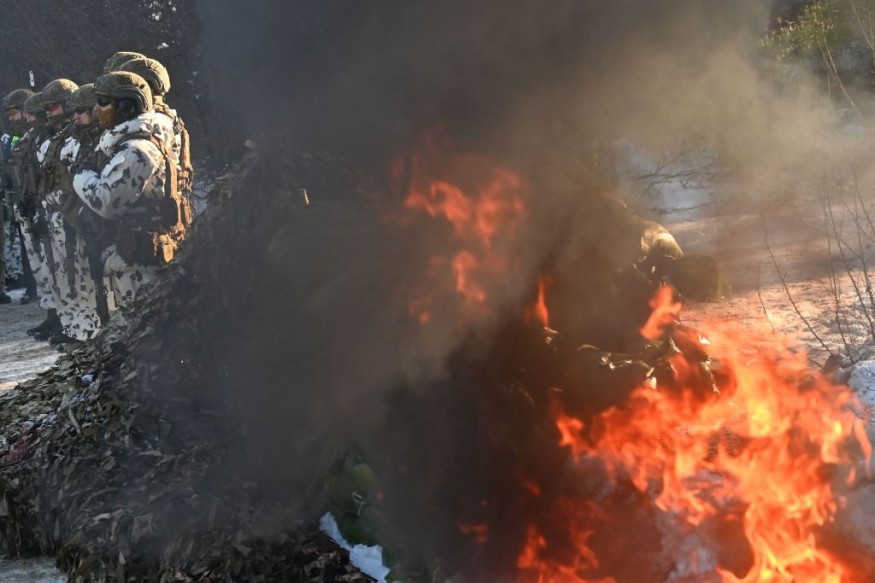Russian military forces shelled the Zaporizhzhia Nuclear Power Station, also called the Zaporizhzhya NPP, in the city of Enerhodar, Ukraine, overnight from Thursday to Friday, March 3 to March 4. The Ukrainian nuclear plant caught fire and emitted significant radiation levels.
The incident forced an emergency meeting between Ukraine, the US, and other countries. The Ukrainian power plant attack manifests both the threat posed by the Russian invasion of Ukraine and the nuclear radiation-triggered explosion-which was not seen for a long time since the Chernobyl disaster in 1986.
The potential risks from the Zaporizhzhia Nuclear Plant attack raise biological and environmental repercussions since the stored radiation poses health hazards, which are also detrimental to animals, plants, and trees.
Shelling Attack on Ukrainian Power Plant

The artillery assault of the nuclear power plant prompted an emergency call between Ukrainian President Volodymyr Zelenskyy, US President Joe Biden, and other world leaders, as per the Associated Press. The incident also prompted the US Department of Energy to activate its nuclear response team.
The nuclear plant attack came as Russian forces continued their advancement in the city located in eastern Ukraine. Latest reports said shells or artilleries struck the nuclear facility and damaged one of its six reactors, causing fire and the emission of radiation.
The Zaporizhzhia Nuclear Power Station is reportedly the largest nuclear facility in Europe. The Zaporizhzhya NPP is situated approximately 200 kilometers (125 miles) west of Donetsk city. The region served to be the first pathway when the Russian invasion started last week.
Potential Explosion
According to Ukrainian Foreign Minister Dmytro Kuleba as cited by CNN, the nuclear plant had its vicinity surrounded by Russian firing, including shelling. Kuleba added if the Zaporizhzhya NPP explodes, its impact will be 10 times greater than the Chernobyl disaster of 1986.
The Ukrainian power plant's spokesman Andriy Tuz said firefighters were unable to extinguish the fire due to the continuance of Russian firing into the power plant, as per the Associated Press. Local authorities consider it may pose a nuclear threat from the largest atomic plant on the continent.
Chernobyl Disaster of 1986
The recent incident was compared to the Chernobyl disaster in Ukraine on April 26, 1986-wherein the Chernobyl nuclear power plant near the city of Pripyat had one of its reactors burned and exploded. The disaster resulted in several casualties, environmental damage, and economic repercussions.
According to the International Atomic Energy Agency (AIEA), the cause of the Chernobyl disaster was when the Chernobyl plant's number four reactor containing uranium malfunctioned; due to both technical and human error-related factors. The malfunction led to an initial explosion and fire.
The AIEA reported 30 people died from the incident, including two plant workers from the initial explosion and 28 responding firefighters who eventually died after several months. The disaster prompted a large-scale evacuation of thousands of people surrounding the plant.
Russian Invasion
Since the invasion of the Russian military forces of Ukraine on Feb. 24, multiple cities and towns have been affected across the country due to recurring airstrikes and shelling. Russia's entry to Ukraine began after several weeks of tension due to the build-up of Russian troops along Ukraine's borders.
As Russian forces continue to advance, the Russia-Ukraine conflict has led to the displacement of hundreds of thousands of Ukrainians and posed a growing regional threat that concerns not only Ukraine but also its neighboring European countries and the United States.
With the recent attack on the Zaporizhzhia Nuclear Power Station, the incident poses the threat of health hazards not only to its nearby inhabitants but also to the environment.
© 2025 NatureWorldNews.com All rights reserved. Do not reproduce without permission.





